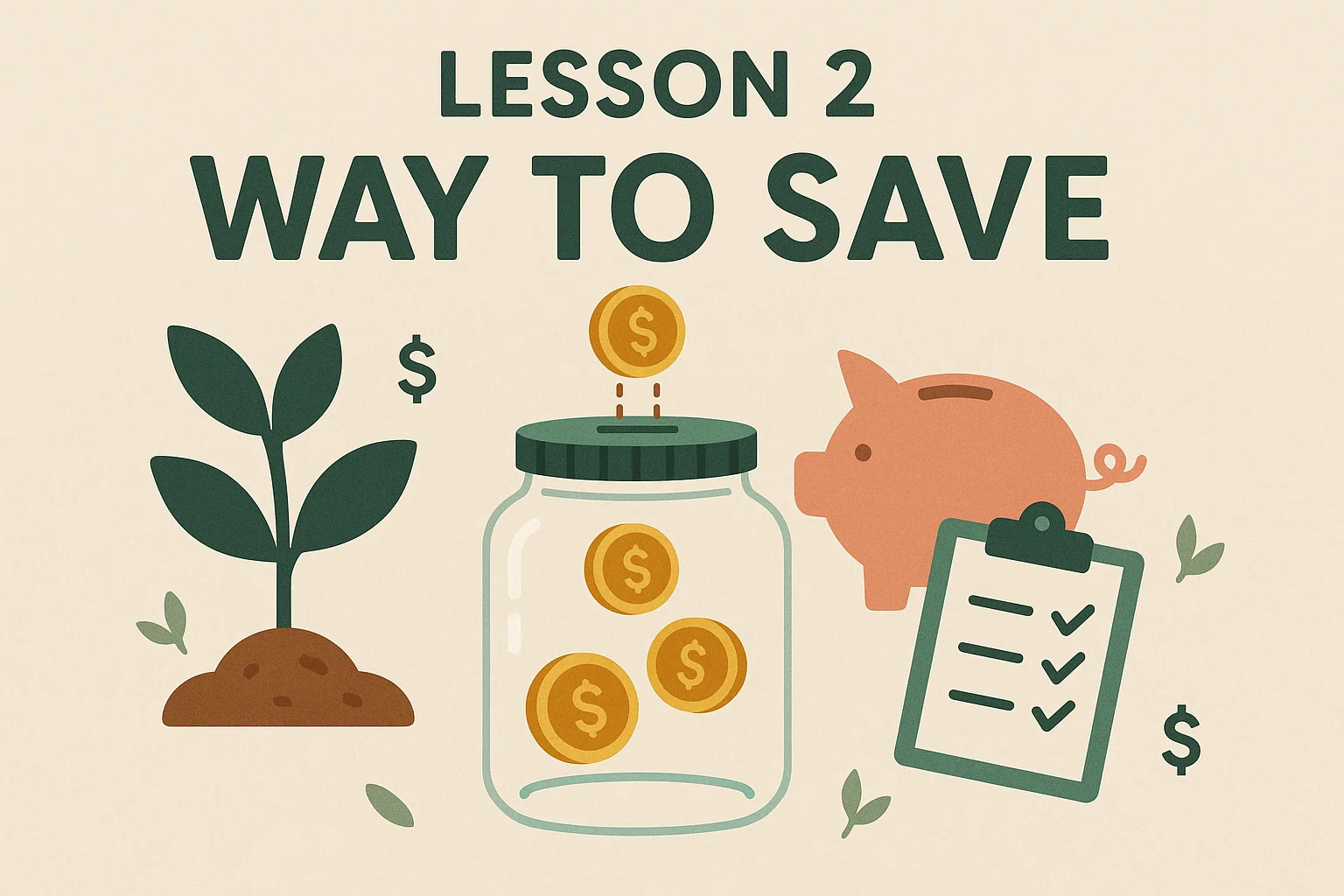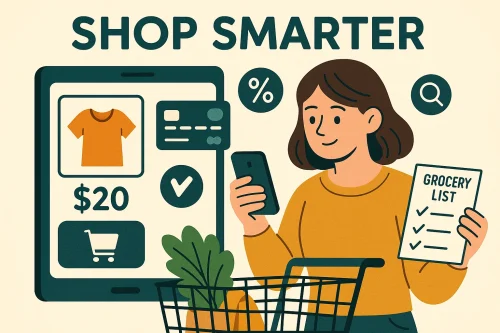Lesson 2: 4 Ways to Save

Tips 1: Limit Your Disposable Income
You can set up automatic transfers from your paycheck account. This allows a preset amount of money to be transferred to your designated investment or pension account on your payday. By doing this, you can limit your spending by controlling the amount of money available to you each month.

Tips 2: Give Yourself a “Cooling-off period” Before Spending
Do you remember the 50/30/20 Rule? According to this guideline, only 30% of your income should be spent on non-essential purchases. To avoid impulsive buying, it’s a good idea to wait at least 24 hours before making any non-essential purchases. If the item you’re considering is expensive, it’s wise to wait even longer.
For example, let’s say Tom has a salary of $10,000 and he follows the 50/30/20 Rule. This means he can allocate $3,000 (30% of $10,000, which I called “30 of 30”) for things he wants. For items costing up to $900 (which is 30% of his $3,000 “want budget”), he should wait for 24 hours. For items that cost between $1,200 (40% of his “want budget”) and $3,000 (100% of his “want budget”), he should wait even longer—adding an extra day for each pricing tier up to $3,000 (8 days).
As a result, if Tom wants to purchase something worth $3,000, he should wait at least 8 days before making the decision. If he remains uncertain about the purchase after the waiting period, he can extend the delay for as long as he feels necessary to reach a final decision.

Tips 3: Finding Alternative
You might find alternatives to replace the items you want. For instance, you could enjoy your homemade coffee instead of purchasing it from a coffee shop. Additionally, consider sharing subscriptions, like a family plan, with your colleagues and friends to save money.
It’s also a good practice to regularly review your bank statements to identify any unused subscriptions and cancel them if necessary. This approach can be helpful during times of waiting; take the opportunity to think about alternatives to the things you’d like to buy.

Tips 4: Shop Smarter
You can save more by shopping smarter. Before you go shopping, check discount apps and look for discount coupons. While you’re shopping, consider buying in bulk for staples and choosing generic brands to save money on essentials.

You might wonder what to do if something exceeds your “want budget,” such as an overseas trip or an expensive car. Does that mean you can’t buy it at all? Not at all! You can save the remaining amount from your “want budget” each month toward your goals as a little reward for yourself.
Challenges
No-spend Week
Consider spending $0 on your “want budget” to evaluate how removing your wants impacts your life. While it may feel challenging at first, once you adjust, you’ll discover that saving becomes much easier.
Save All Change or Cash-back
Deposit all the change and cash-back you receive into your savings account, and treat yourself later. Although that won’t be much, persistence can move mountains.
Build Your Emergency Fund
Start with $500 to $1,000 and aim for 3 to 6 months’ worth of expenses. This fund is intended to protect you from needing to dip into long-term savings or use credit cards during emergencies.
“When there’s a will, there’s a way”
TNT Meaning
We’re a platform that publishes enlightening articles for everyone to read & discuss. Our mission is to bring new meanings into readers’ lives through our article on every Tuesday.
Comments must not include discrimination, hatred, violence, or pornography messages. Once we find that, the comment will be deleted, and the publisher may be banned from leaving any comments permanently.
